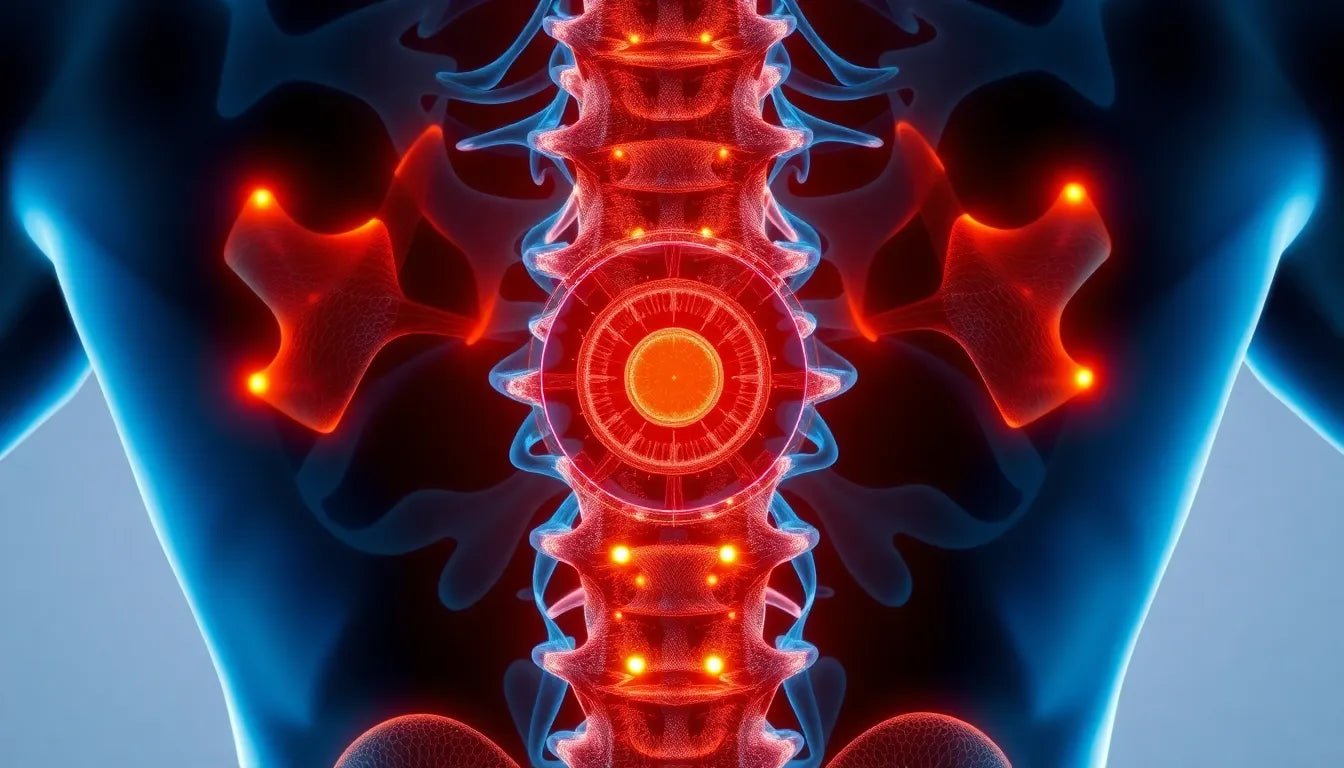For many individuals, the struggle with sciatica pain intensifies as night falls, creating a significant impact on sleep quality and overall well-being. This nocturnal discomfort can turn restful nights into a cycle of tossing and turning, leaving sufferers feeling fatigued and irritable the next day. Sciatica, a condition that originates from nerve pain in the lower back and radiates down through the leg, is a common culprit behind this nighttime distress.
Understanding sciatica and its nighttime challenges
Sciatica is a condition characterized by irritation or compression of the sciatic nerve roots, which are located in the lower spine. This nerve extends from the lower back down through the buttocks and legs, and when it becomes compressed or irritated, it can result in sharp, burning, or shooting pain. Additional symptoms may include numbness, tingling, and muscle weakness along the nerve's path. These symptoms can vary in intensity, but for many, they become particularly pronounced at night.
The aim of this post is to explore the reasons why sciatica pain often worsens during the nighttime hours and to present effective strategies for managing this pain. By understanding the underlying factors that contribute to increased pain at night, individuals can take proactive steps to mitigate these effects and improve their sleep quality.
The purpose of addressing nighttime sciatica pain
The exacerbation of sciatica pain at night is not merely a discomfort; it can have a profound impact on one's health and daily life. Quality sleep is crucial for physical recovery, mental health, and overall well-being. When pain disrupts this essential rest, it can lead to a cascade of negative effects, including decreased productivity, mood disturbances, and an increased perception of pain during waking hours.
This blog post aims to provide insights into why sciatica pain tends to worsen at night and to offer practical strategies for relief. By implementing these strategies, individuals can work towards achieving more restful sleep, which is a vital component of managing sciatica and enhancing quality of life. Whether you are seeking to understand the physiological reasons behind your nighttime discomfort or looking for actionable tips to ease the pain, this guide is designed to assist you on your journey to better sleep and reduced sciatica symptoms.
Understanding sciatica and nighttime pain
Sciatica pain is typically caused by irritation or compression of the sciatic nerve roots located in the lower spine. This nerve, the largest in the body, runs from the lower back through the buttocks and down each leg. When it becomes compressed or irritated, often due to herniated discs, bone overgrowth, or conditions like piriformis syndrome, it can result in a range of symptoms. These include sharp, burning, or shooting pain, as well as numbness, tingling, and muscle weakness along the nerve's path.
Why sciatica pain worsens at night
Many individuals notice that their sciatica pain intensifies at night, disrupting sleep and diminishing overall restfulness. This can be attributed to several physiological factors. Firstly, lying down increases pressure on the sciatic nerve, especially if the sleeping position does not adequately support spinal alignment. Additionally, our bodies have limited mobility during sleep, reducing the ability to make positional adjustments that might alleviate nerve pressure.
Moreover, inflammatory processes tend to escalate at night due to the body's natural circadian rhythms, potentially heightening pain perception. Contributing conditions such as piriformis syndrome or scoliosis can further exacerbate nighttime discomfort, as these issues may cause additional stress on the sciatic nerve.
Impact on sleep quality
The disruption of sleep due to sciatica pain can have far-reaching effects on health and quality of life. Poor sleep quality can lead to increased fatigue, irritability, and decreased productivity during the day. Furthermore, inadequate rest can exacerbate the perception of pain, creating a vicious cycle of discomfort and sleeplessness. Addressing nighttime sciatica pain is crucial for breaking this cycle and promoting better overall health and well-being.
Strategies for managing nighttime sciatica pain
Optimal sleeping positions
To alleviate sciatica pain at night, adopting optimal sleeping positions is essential. Side sleeping with a pillow between the legs can help maintain proper spinal alignment and reduce nerve pressure. It's advisable to avoid sleeping on the stomach, as this position can exacerbate nerve impingement and increase discomfort.
Practical tips for relief
Incorporating supportive pillows into your sleep environment can significantly reduce pressure on the sciatic nerve. Additionally, establishing a bedtime routine that includes gentle stretches or exercises targeting the lower back and piriformis muscle can help relax the body and prepare it for restful sleep. Maintaining a consistent sleep schedule is also beneficial, as it helps regulate the body's internal clock and promotes better sleep quality.
Lifestyle adjustments
Creating a supportive sleep environment is another vital step in managing nighttime sciatica pain. Investing in a quality mattress that provides adequate support and aligns with your preferred sleeping position can make a significant difference. Stress management and relaxation techniques, such as deep breathing exercises or meditation, can also play a role in reducing pain perception and improving sleep quality.
By understanding the factors that contribute to nighttime sciatica pain and implementing these strategies, individuals can take proactive steps to ease discomfort and improve their sleep. This approach not only enhances restfulness but also supports overall health and well-being, allowing those affected by sciatica to lead more comfortable and productive lives.
Further relief techniques for sciatica pain at night
While lifestyle adjustments and sleeping positions can significantly alleviate sciatica pain at night, there are additional strategies that can further enhance relief. Engaging in physical therapy and exercise is one of the most effective methods. Guided physical therapy not only strengthens the muscles supporting the spine but also improves flexibility, which can reduce pressure on the sciatic nerve.
Exercises specifically targeting the sciatic nerve and surrounding muscles can provide significant relief. These may include gentle stretching of the lower back, hamstrings, and piriformis muscle. Such exercises help in reducing muscle tension and improving blood circulation, which can alleviate pain and discomfort.
When to seek medical help
While many individuals can manage their sciatica pain with home care and lifestyle adjustments, there are situations where professional medical intervention is necessary. It is important to consult a healthcare provider if the pain is severe, persistent, or accompanied by neurological deficits such as significant weakness, numbness, or difficulty controlling the bladder or bowels. These symptoms may indicate a more serious underlying condition requiring medical evaluation and treatment.
Frequently Asked Questions
What is the best sleeping position for sciatica pain?
Side sleeping with a pillow between the knees is often recommended to maintain spinal alignment and reduce pressure on the sciatic nerve. This position helps in keeping the spine in a neutral position, which can alleviate pain.
How can I reduce inflammation that worsens at night?
Reducing nighttime inflammation can be achieved through several methods. Taking anti-inflammatory medications as prescribed, enjoying a warm bath before bed, and maintaining a healthy diet rich in anti-inflammatory foods can all contribute to managing inflammation effectively.
Are there any specific exercises to avoid with sciatica?
It is advisable to avoid high-impact activities and exercises that put excessive strain on the lower back, such as heavy lifting or intense aerobic exercises. Instead, focus on low-impact activities like walking, swimming, or cycling, which can improve overall fitness without exacerbating sciatica symptoms.
How long does it typically take for sciatica pain to improve with home care?
Improvement in sciatica pain with consistent home care and lifestyle adjustments can vary among individuals. Many people notice relief within a few weeks, but the duration can depend on the severity of the condition and adherence to recommended strategies.
Can a change in mattress help with sciatica pain at night?
Yes, investing in a supportive mattress that aligns with your sleeping position can significantly impact pain levels and sleep quality. A mattress that provides adequate support and comfort can help maintain proper spinal alignment and reduce pressure on the sciatic nerve.
By exploring these relief techniques and understanding when to seek medical help, individuals can better manage their sciatica pain at night. Implementing these strategies can lead to improved sleep quality and overall well-being, allowing for a more comfortable and productive life.
Sources
- Cleveland Clinic. "Sciatica Overview."
- Mayo Clinic. "Sciatica: Symptoms and Causes."
- Sleep Foundation. "Sciatic Nerve Pain Relief at Night."
- Healthline. "How to Sleep with Sciatica."
- Scoliosis Reduction Center. "Why Sciatica Pain is Worse at Night and How to Fix It."
- Semrush. "What is SERP Analysis & How to Do One."
- Hospital for Special Surgery (HSS). "Sciatica: Symptoms and Causes."
- RockContent. "SERP Analysis and SEO Strategy."


















